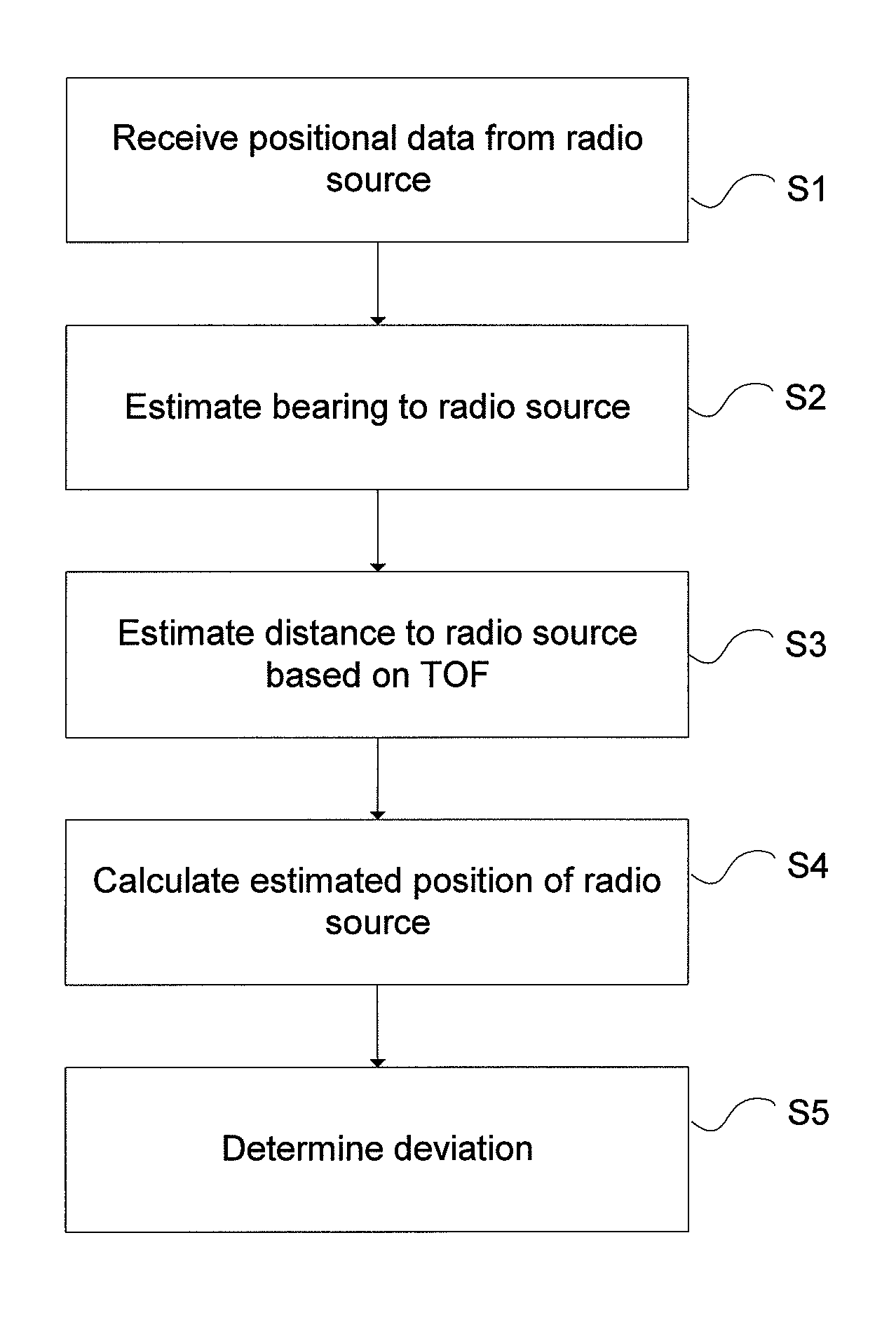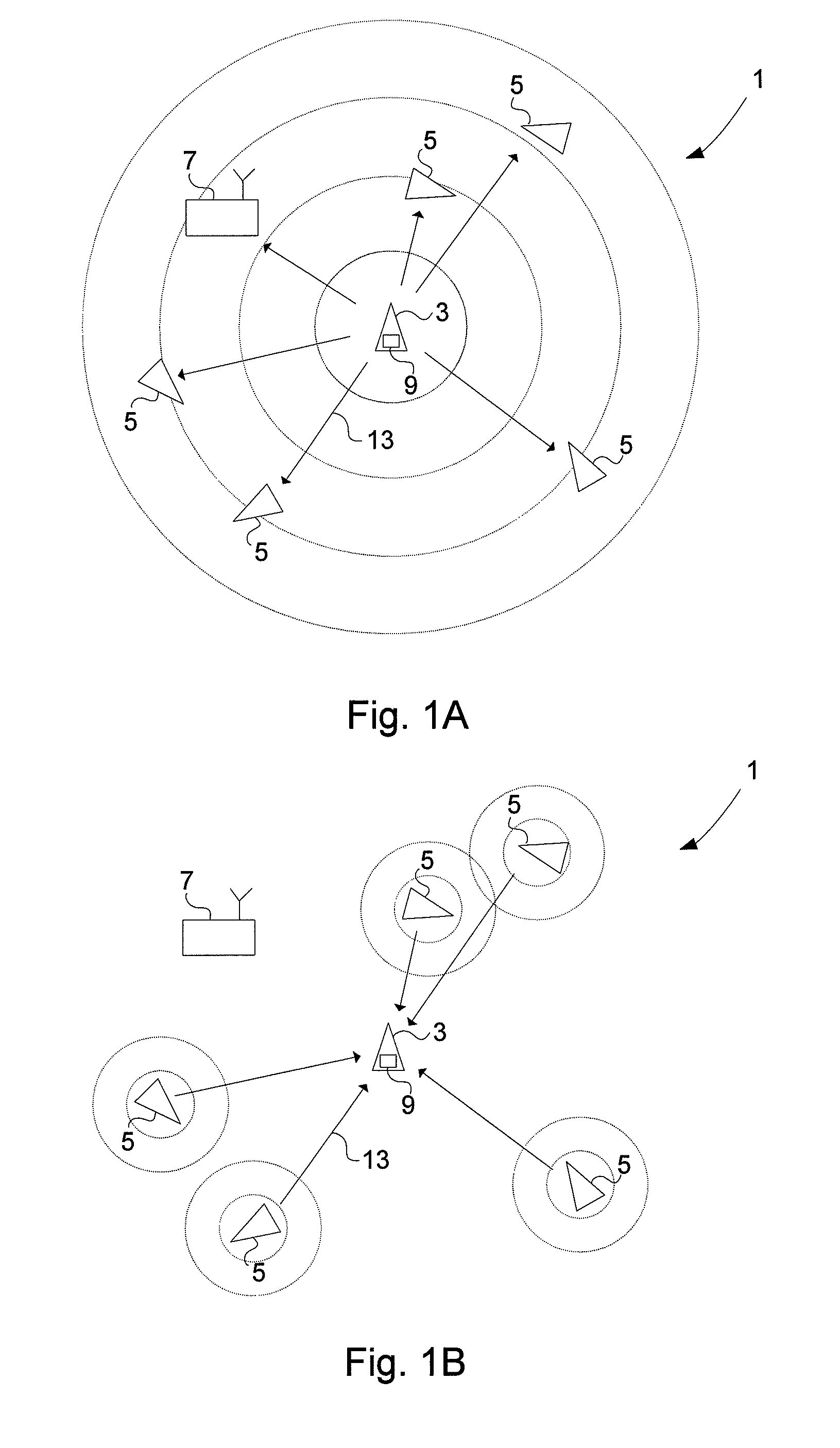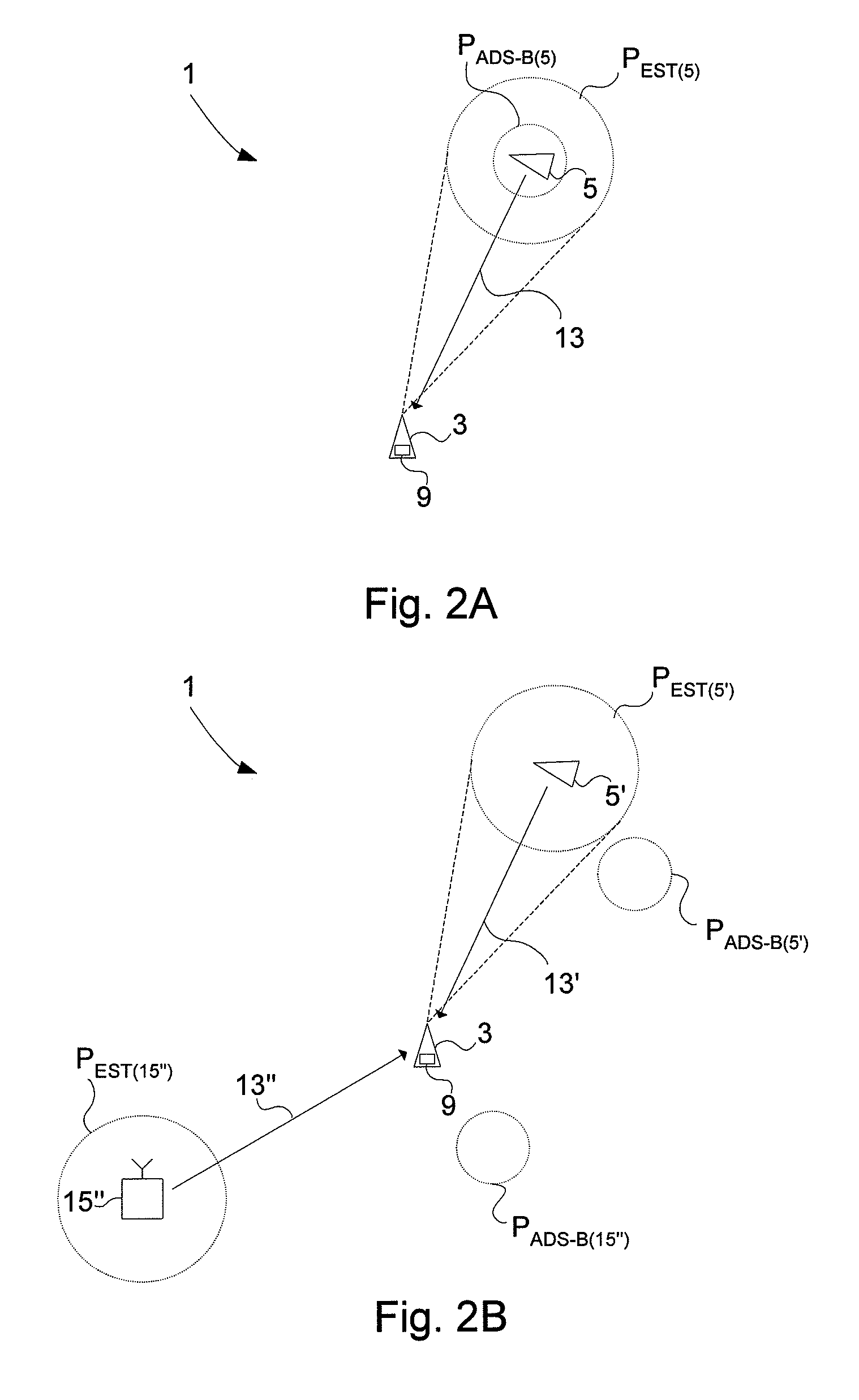Validity check of vehicle position information
a vehicle position and information technology, applied in the field of traffic surveillance, can solve the problems of nuisance warnings, uncertainty in the determined relative position, and the tcas system of today is not considered suitable for future collision avoidance and/or separation provision systems, so as to reduce the risk of malicious use and less prone to errors
- Summary
- Abstract
- Description
- Claims
- Application Information
AI Technical Summary
Benefits of technology
Problems solved by technology
Method used
Image
Examples
Embodiment Construction
[0060]An aircraft or an air traffic control (ATC) ground station utilizing an ADS-B-based vehicle surveillance system is completely dependent on that the information in ADS-B messages received from surrounding aircraft is correct. Specifically, positional data contained in the ADS-B messages from emitting aircraft have to be trusted to be correct. The flaw is that as long as the received messages conform to the correct format they will be interpreted as ADS-B messages and, as such, relied upon by the vehicle surveillance systems. This fact makes ADS-B-based vehicle surveillance systems extremely vulnerable to ADS-B transponder malfunction and malicious use by transmission of faked ADS-B data.
[0061]All three data link technologies (Mode S ES, VDL Mode 4 and UAT) used for ADS-B suffer from the same shortcoming; the receiver of a message does not have any means to check whether the contents of the message are valid. An erroneous report will not be detected as long as it conforms to the...
PUM
 Login to View More
Login to View More Abstract
Description
Claims
Application Information
 Login to View More
Login to View More - R&D
- Intellectual Property
- Life Sciences
- Materials
- Tech Scout
- Unparalleled Data Quality
- Higher Quality Content
- 60% Fewer Hallucinations
Browse by: Latest US Patents, China's latest patents, Technical Efficacy Thesaurus, Application Domain, Technology Topic, Popular Technical Reports.
© 2025 PatSnap. All rights reserved.Legal|Privacy policy|Modern Slavery Act Transparency Statement|Sitemap|About US| Contact US: help@patsnap.com



